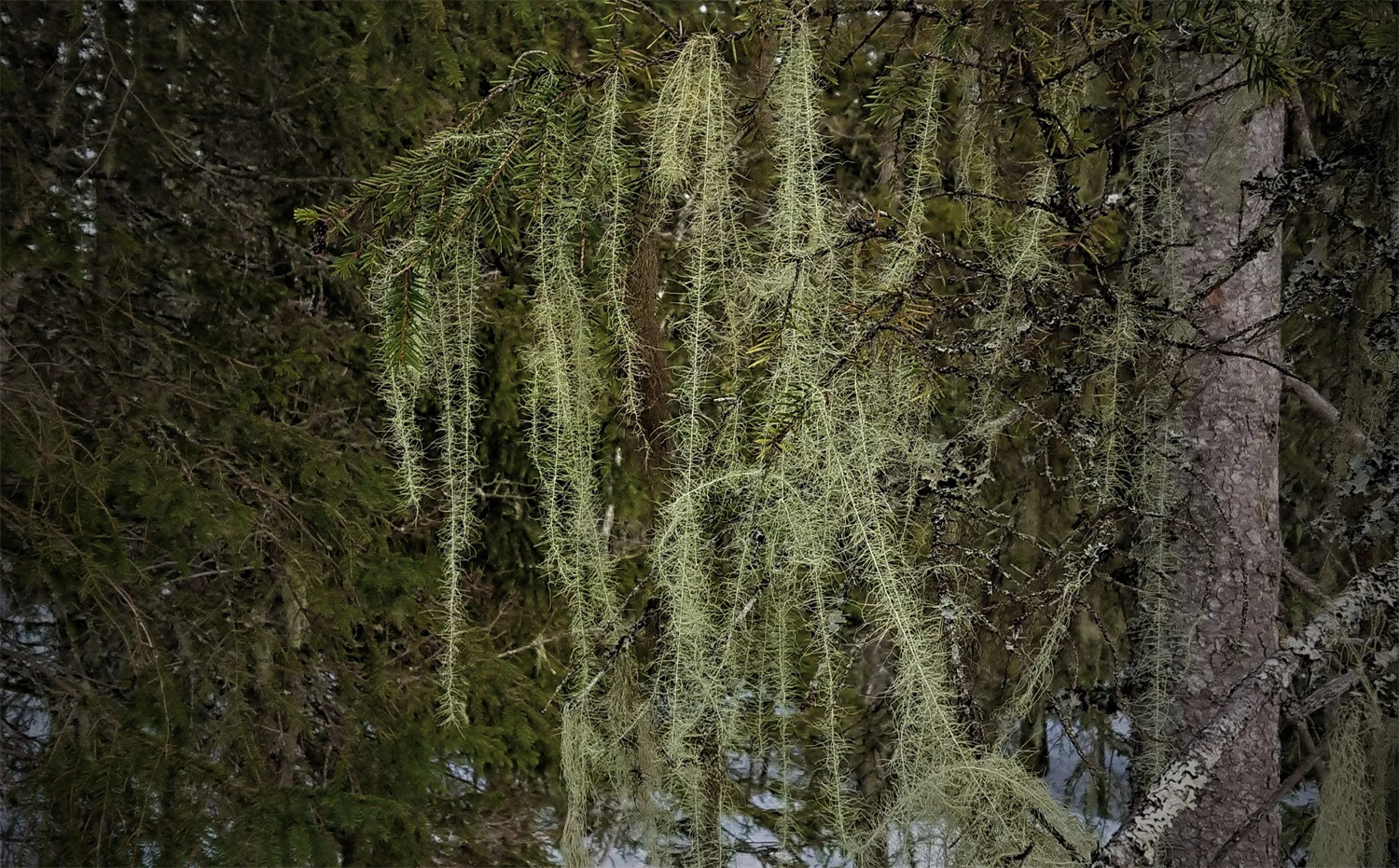During the 90s, the issue of biodiversity gained greater focus. Since then, Holmen has gathered a great deal of knowledge about how we can improve biological diversity and at the same time increase growth in the forest. Every ten years, we inventory our entire forest holding to calculate sustainable harvest levels over time. The value of the forests are also described in local consideration plans that provide guidelines for how they should be managed in order to create and preserve long term natural values in the long term.
Inventories carried out in 2022 show that we are heading in the right direction. Usnea longissima, which is the name of the world's longest lichen, is a red-listed and endangered species that requires a certain type of forest to thrive. The lichen, which can grow up to ten meters long, wants shelter from the wind but not too dense forest. It thrives best at high altitudes, on north slopes or near bogs. Holmen's conservation specialist Tomas Rask found the lichen in twelve new locations, so-called premises, within Holmen's voluntary reserves in Västernorrland.
Compared to other lichens, Usnea longissima is not spread by spores, but by small pieces of the lichen falling off. This makes it difficult for it to spread.
"The findings are a good sign that Holmen's deposits are of a high quality", says Tomas Rask.
David Rönnblom, nature conservation specialist at Holmen Forest, describes more observations of threatened species on Holmen's land. The measures taken to promote the rare white-backed woodpecker seem to have yielded results, and the very rare bird has been sighted in Västerbotten during the year.
"The white-backed bird is perhaps the most critically endangered bird species, so it is significant", says David Rönnblom.
Through conservation burning, where forests are burned in a controlled manner, Holmen has succeeded in creating favorable environments for several rare plants and animals.
"It is a good example of a measure with clear results. In Berga Kunskapsskog, we have created a strong population of hornbills, a beetle that has been absent from Västerbotten since the 60s", says David Rönnblom.
Other rare insects that have increased thanks to the measures are pine hooded beetles and rough flat beetles and recently the highly threatened white-horned bark beetle was found on Berga. The work to promote the regrowth of more rare species is still ongoing in Holmen's forests.
Read more about Holmen's work for biodiversity


